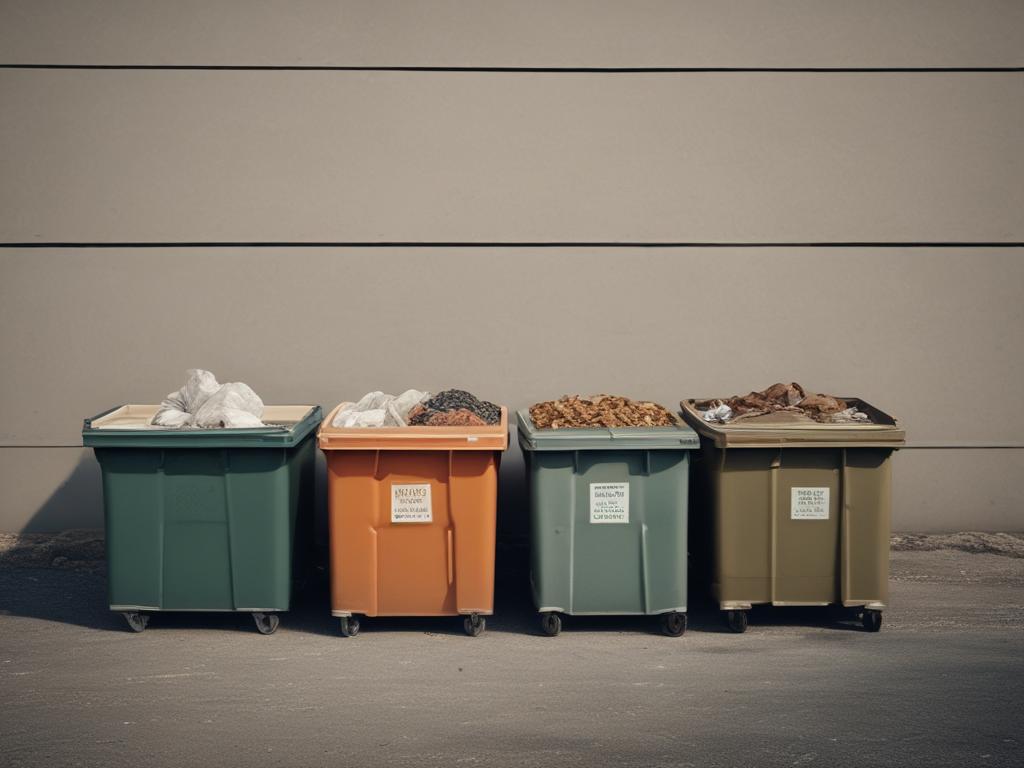Website designed with the B12 website builder. Create your own website today.
Start for free
Choosing the right dumpster size is crucial for efficient waste management and can make or break the success of your project. Whether you’re tackling a home renovation, a landscaping overhaul, or a large construction job, having the appropriate dumpster at your disposal ensures that waste disposal is streamlined, safe, and cost-effective. A well-chosen dumpster minimizes the risk of overflow, helps you stay organized, and saves you from incurring additional fees due to incorrect sizing.
In this blog post, we'll guide you through the essential aspects of selecting the perfect dumpster size for your project. From key factors to consider, such as the volume and type of waste, to exploring the top options available, you'll discover how to make informed decisions that optimize your waste management process. Let’s delve into the details to equip you with the knowledge needed for a successful waste removal strategy.
Understanding the importance of selecting the right dumpster size for your project
Selecting the right dumpster size is crucial for efficient waste management. Choosing a dumpster that’s too small can lead to overflow issues, requiring additional trips and increasing project costs. On the other hand, opting for an oversized dumpster can result in unnecessary expenses and wasted space. An appropriately sized dumpster not only ensures that all waste fits comfortably but also streamlines the loading process, thereby minimizing delays and maximizing productivity on-site.
In addition to cost-effectiveness, the right dumpster size contributes to environmental responsibility. Efficient waste disposal helps in maintaining the cleanliness of your work area and encourages proper recycling practices. By understanding the specific needs of your project, you can select a dumpster size that aligns with your waste management goals. This informed approach also enhances your project's overall success, as it enables you to focus on your tasks rather than worrying about waste overflow and disposal complications.
Key factors to consider when choosing a dumpster size
When selecting the right dumpster size, it’s essential to assess the volume and type of waste your project will generate. Consider the nature of the materials you will be disposing of—are they bulky items like old furniture, or are they lighter materials such as drywall and yard waste? Understanding the weight and dimensions of your waste will help you avoid overloading the dumpster, which can lead to additional fees or complications during pickup. Take the time to estimate the total volume of debris based on your project’s scope, whether it’s a home renovation, construction job, or spring cleaning.
Another critical factor to consider is the space available for dumpster placement. Measure the area where you plan to position the dumpster to ensure it fits comfortably without obstructing traffic or creating hazards. Also, think about accessibility for the delivery and pickup truck. If the dumpster is in a tight area, you may want to choose a smaller size or a more narrow option. Additionally, consider the project timeline; a larger dumpster may accommodate excess waste generated over an extended period, while a smaller one may suffice for quicker, more contained jobs. Balancing these factors will help you make an informed decision, ensuring you have the right dumpster size for both efficiency and convenience.
Top options for efficient waste management and project success
When it comes to selecting the right dumpster size, a few popular options can cater to various project needs. For smaller projects, like home cleanouts or minor renovations, a 10 or 15-yard dumpster often suffices. These sizes conveniently hold light debris such as household items or yard waste, making them ideal for cleanup tasks. For medium-sized projects, like a kitchen remodel or landscaping, a 20-yard dumpster provides a more spacious option. This size accommodates heavier materials and larger volumes without the need for multiple trips, optimizing both time and resources.
For larger projects, such as commercial construction or extensive renovations, a 30 or 40-yard dumpster becomes essential. These dumpsters handle massive amounts of debris, including large appliances or bulk construction waste, allowing for efficient waste management throughout the project's duration. By selecting the appropriate size, you not only streamline the cleanup process but also prevent potential overage fees that can arise from choosing a dumpster that’s too small. Ultimately, aligning your dumpster size with your project’s specific needs ensures that you maximize efficiency and achieve project success.